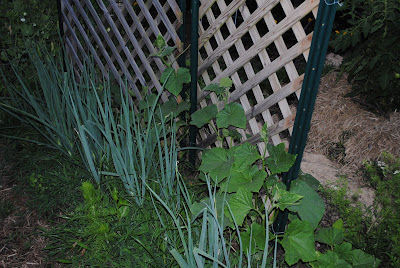more mouth watering shots...
This last shot is admittadly not all from the backyard garden. The good folks over at New Earth Farm have been harvesting boxes and boxes of squash. More squash than they know what to do with. This is good news for the members of the Broad Bay CSA, as the home squash has been decimated by vine borers (nasty creatures that lay their eggs in the base of the squash plant, then the evil hatchlings eat their way right through the stem of the plant, effectively killing it). The beautiful yellow patty pan, long yellow zephyr, and fat watermellon looking magda squash are all from NEF. Not to fear though, the next wave of squash plants are already underway. This is the reality with some of the fast growing crops... they go as quickly as they came. The runner beans that were producing heavily at the beginning of summer are now starting to fade...
Its not by chance that the second wave of bush beans are stepping up to fill the gap...
...if you look closely you can find a green, yellow, and purple bean hiding amongst the foliage. You can imagine how harvesting can become a long and tedious task. It does however train the eye to notice small details. Picking becomes a meditation, and a picker can really get lost in the world of the plant. One time Melissa (the best picker I know), grabbed onto a "green bean" that turned out to be a green snake. Though the snake was a harmless garden snake, it goes to show the perils of being entrenched by nature. It is not rare, at this time of year, to hear the wizzing of flying pollinators by the ears. The beans in the picture above back right up to the center circle garden filled with bee attracting salvia flowers.
The small but brightly colored flowers drive the bees crazy. Better the flowers than my face. Any flowers that humans like tend to be liked by bees as well. Its no surprise that they really love this nice stand of zinneas in the ornamental garden...
And don't forget... without the bees, there'd be none of these...
Thank you bees for the fruits of summer!


















































